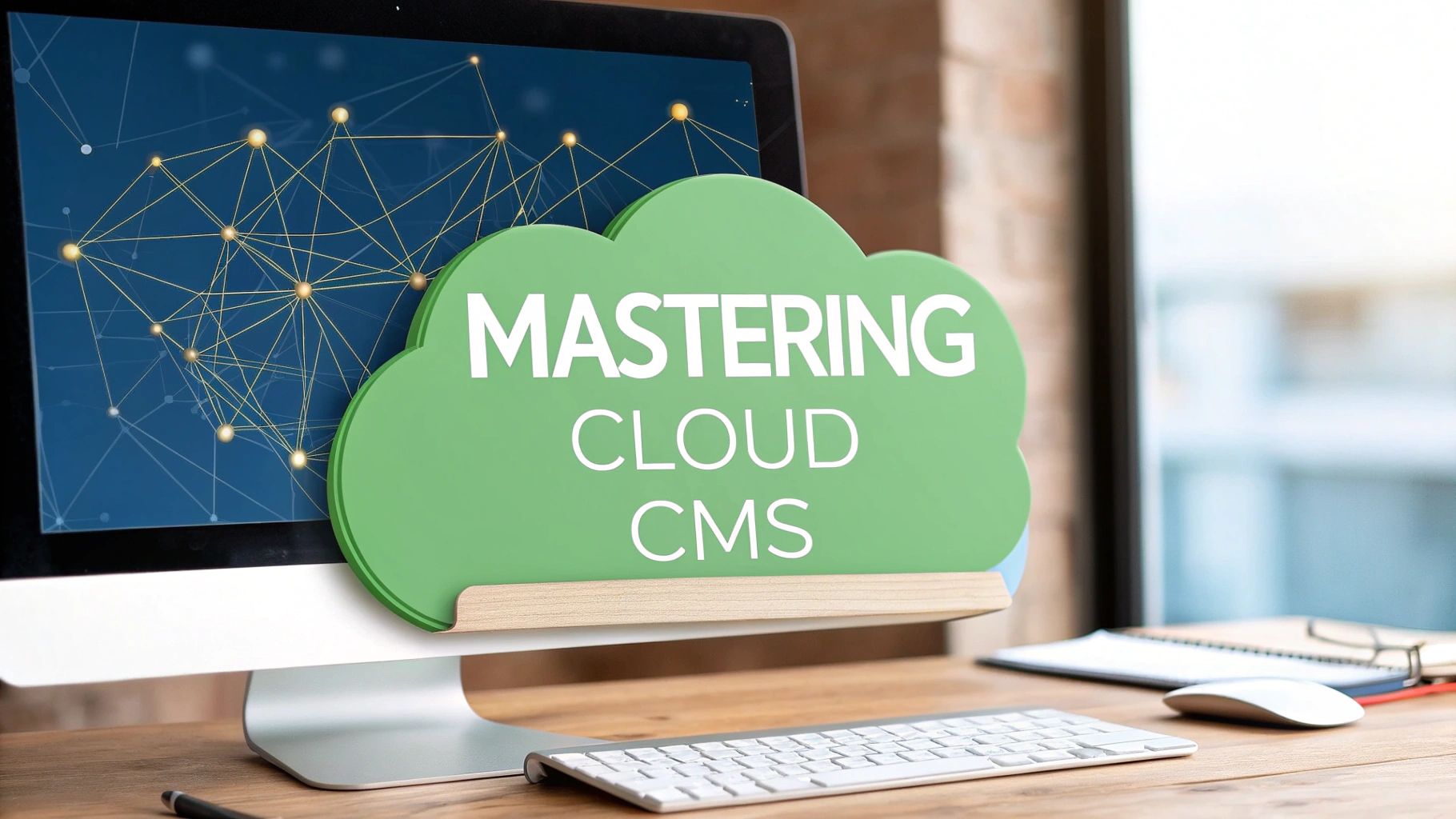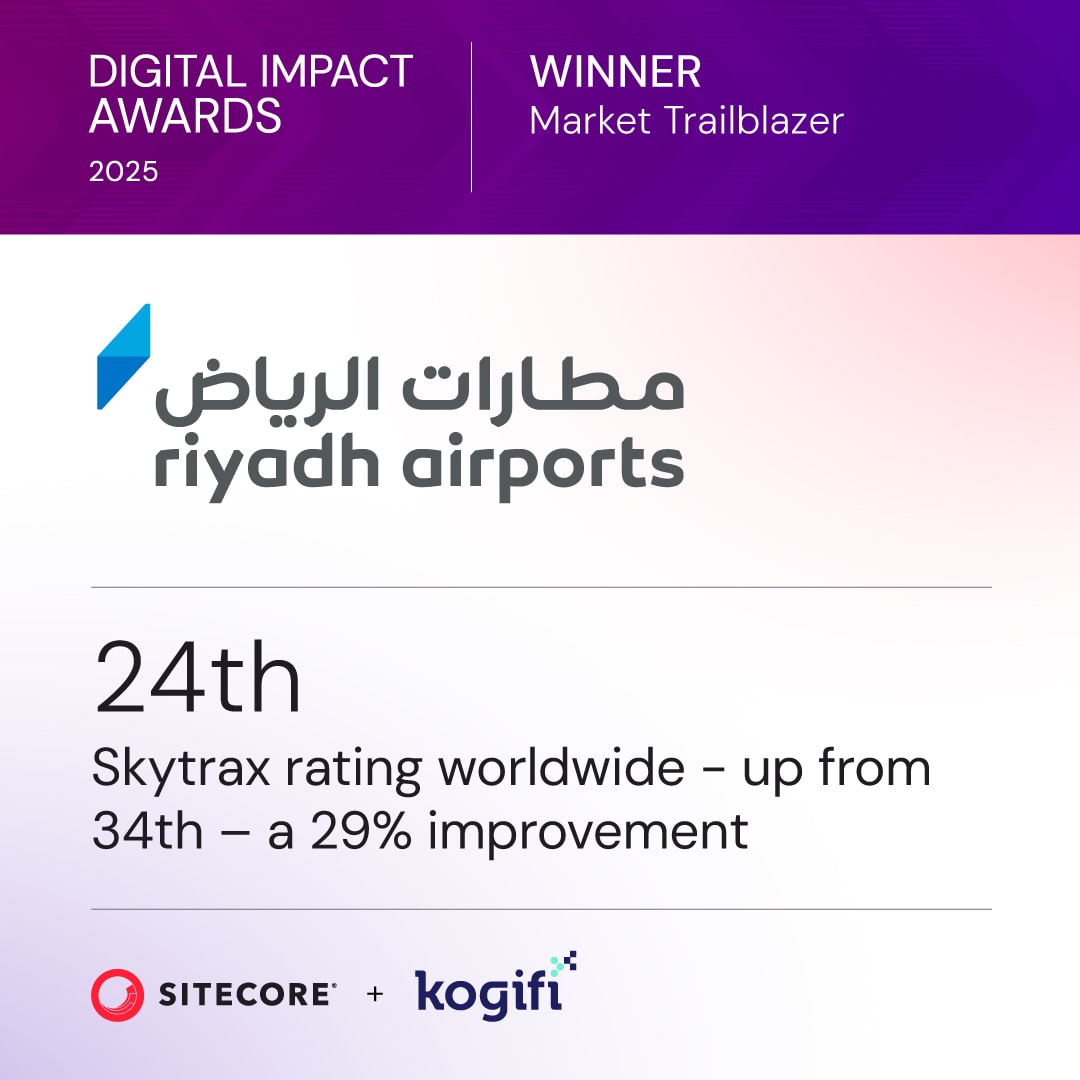Cloud skills aren’t just for IT teams anymore. Today, 90% of organizations rely on cloud platforms, and the global cloud market is expected to exceed $832 billion by 2025. These tools are reshaping how marketing, finance, and HR teams work - making cloud knowledge as important as basic computer skills once were.
Here’s why non-technical teams need cloud expertise:
- Marketing: Use cloud tools to analyze customer data, personalize campaigns, and improve decision-making.
- Finance: Manage budgets better with real-time cost tracking and automation.
- HR and Operations: Streamline workflows, enhance collaboration, and improve employee experiences.
The skills gap is real - only 65% of workers are equipped for today’s tech demands. Training non-technical teams to understand cloud basics, security, and cost management can solve this, boosting productivity and reducing reliance on IT. Companies that invest in cloud training see faster decision-making, improved collaboration, and higher employee satisfaction.
Cloud skills aren’t optional anymore - they’re a competitive necessity.
Uplevel your digital transformation with Google Cloud credentials

How Cloud Skills Help Non-Technical Teams
When non-technical teams gain an understanding of cloud platforms, they shift from being passive users to becoming active, strategic contributors. This knowledge influences not only daily operations but also the broader decision-making processes across various departments.
By applying cloud insights, each team can achieve more precise and impactful results.
Marketing Teams: Better Campaigns Through Data and Cloud Tools
For marketing teams, cloud skills open the door to merging creativity with data-driven strategies. Consider this: 71% of consumers expect personalized experiences, and 76% feel frustrated when they don’t get them. With cloud-based tools, marketers can unify customer data, making it easier to deliver personalized campaigns and understand customer behavior [12, 13].
Cloud knowledge also supports deeper market research, smarter strategy development, and clear data visualizations that simplify complex insights. Tools like Google Analytics and Tag Manager play a significant role in these efforts. The demand for such expertise is growing - projections show an 18% increase in job opportunities for market research analysts in the U.S. by 2029. This highlights the value of professionals who can not only interpret data but also use it to drive business improvements.
Finance Teams: Smarter Budgeting and Cost Control
Finance teams with cloud expertise can make better decisions by accessing real-time insights into costs and usage. Cloud Financial Management (CFM) integrates traditional finance processes with the flexibility of cloud environments, ensuring budgeting and planning are both efficient and transparent. Automation tools further simplify tasks like expense reporting and tax calculations, cutting down on errors and saving time.
One example is Delhivery, which saved 15% on AWS costs in just 50 days through automated cost tracking in 2025. As Malwarebytes noted, "CloudZero has really changed the way we think about cost. It decentralized our cost management and put the power into the hands of our engineers". With the financial reporting tools market projected to grow from $14.94 billion in 2024 to $37.56 billion by 2031, finance teams have a clear opportunity to use cloud tools for turning cost data into actionable insights and delivering more accurate reports.
| Cloud Financial Management Capabilities | Key Functions | AWS Resources |
|---|---|---|
| Organize | Build a cost allocation strategy aligned with business goals | AWS Billing Conductor, AWS Cost Allocation Tags, AWS Cost Categories |
| Report | Provide detailed insights to boost accountability | AWS Cost Explorer, AWS Cost and Usage Report |
| Control | Set governance frameworks with guardrails | AWS Cost Anomaly Detection, AWS Identity and Access Management |
| Forecast | Predict resource usage and spending with dashboards | AWS Cost Explorer (Self-Service), AWS Budgets (Event-Driven) |
| Budget | Keep spending in check with thresholds and alerts | AWS Budgets, AWS Budget Actions, AWS Service Catalog |
HR and Operations: Smoother Workflows and Better Collaboration
For HR and operations teams, cloud knowledge can revolutionize workforce management. Automating tasks like onboarding, leave tracking, and payroll processing can reduce administrative costs by up to 30% for HR professionals and 49% for employers. Cloud platforms also improve communication, making the employee experience smoother from onboarding to offboarding.
These platforms are also key to fostering continuous learning and collaboration. By working together, HR and operations can identify and develop the skills needed for future projects. For example, Boldt, a contractor in Wisconsin, uses Bridgit Bench to gain real-time staffing insights, enabling proactive recruitment. Similarly, Wohlsen, a Pennsylvania-based contractor, improved project visibility across its Connecticut operations with the same tool.
Agile organizations also retain employees at a 34% higher rate. Darren Walker, Chief HR Officer at Sanford Health, summed it up well: "Our aim is to simplify our employees' work so they can focus on taking care of our patients and residents". By adopting cloud-based workflows and regularly evaluating team skills, HR teams can improve efficiency while keeping employees engaged and satisfied.
Core Cloud Skills Non-Technical Teams Should Learn
As cloud platforms continue to reshape how businesses operate, understanding core cloud concepts has become essential - even for non-technical teams. You don’t need a computer science degree to grasp the basics. A solid foundation in cloud fundamentals can empower teams to make smarter decisions and play a meaningful role in digital transformation. With nearly half of today’s employees identified as business technologists, these skills are no longer optional - they’re a must for staying competitive.
Cloud Basics and Common Terms
At its core, cloud computing delivers services - like servers, storage, databases, networking, and software - over the internet. This allows teams to access powerful tools without needing extensive technical expertise.
Understanding the three main service models is key:
- Software as a Service (SaaS): Think of tools like Salesforce or Microsoft 365, which are accessed via web browsers.
- Platform as a Service (PaaS): Provides environments for building and deploying applications.
- Infrastructure as a Service (IaaS): Offers core computing resources like virtual servers and storage.
Deployment models are equally important:
- Public cloud: Shared services delivered over the internet, offering scalability and cost savings.
- Private cloud: Dedicated to a single organization, giving more control and security.
- Hybrid cloud: Combines public and private clouds, balancing cost, performance, and security.
Another concept to know is serverless computing, which eliminates the need for teams to manage servers. Instead, they can focus on their actual work while the infrastructure runs in the background. This is especially useful for non-technical teams who want functionality without complexity.
Cloud computing also changes how businesses handle expenses. It operates on a pay-as-you-go model, shifting costs from large upfront investments (CapEx) to flexible, ongoing expenses (OpEx). This approach allows businesses to adjust resources based on actual needs rather than predictions.
Once teams are comfortable with the basics, they must also learn how to safeguard cloud operations through strong security practices.
Security Rules and Compliance Requirements
Security is no longer just IT’s responsibility - it’s everyone’s job. Human error, such as losing devices or mishandling documents, accounts for 47% of data breaches according to business leaders. This highlights the importance of basic security awareness across all teams.
Employees should know how to:
- Identify phishing attempts.
- Create strong, secure passwords.
- Report suspicious activity.
These simple steps can significantly reduce the risk of breaches. For example, Uber’s 2016 data breach - which exposed 57 million records - resulted from poorly stored AWS credentials and weak access controls, costing the company $148 million. Similarly, Capital One’s 2019 breach affected over 106 million individuals due to a firewall misconfiguration and inadequate security monitoring, leading to a $190 million settlement.
To stay proactive, teams can use a cybersecurity checklist. Key items might include:
- Securing WiFi connections.
- Keeping anti-virus software updated.
- Backing up files to the cloud.
- Locking screens in shared spaces.
- Using VPNs and encrypting sensitive data.
Access control is another critical area. Proper authentication and authorization practices can prevent unauthorized access and data leaks. For instance, Tesla’s 2018 Kubernetes cluster hijack - caused by an unprotected console - allowed attackers to mine cryptocurrency. Understanding these risks and implementing safeguards can protect organizations from similar incidents.
With security measures in place, teams can then focus on optimizing their cloud spending.
Cost Tracking and Budget Control in Cloud Systems
Managing cloud costs isn’t just the finance team’s job - it’s a shared responsibility. Companies waste up to 32% of their cloud budgets, making cost management skills essential for everyone.
Start by setting clear budget goals and regularly reviewing unused resources. Features like auto-scaling and load balancing can help consolidate idle resources, reducing unnecessary spending.
Right-sizing is another useful practice. Teams can analyze their computing needs and adjust resources to the most efficient size, avoiding over-provisioning.
To catch unexpected expenses, use cost anomaly monitoring. Many cloud platforms offer machine learning tools that flag unusual spending patterns and send alerts when budgets are exceeded.
Resource tagging is also a game-changer. By tagging resources by department, project, or function, teams can track spending more effectively and identify high-cost areas.
Regular billing reviews provide valuable insights into spending patterns. Instead of just looking at totals, focus on the "where, when, and how" of cloud expenses to uncover optimization opportunities.
The good news? Most cloud providers include cost management tools at no extra charge - though you’ll still pay for the services you use. This makes it easy for teams to monitor spending without additional budget strain.
sbb-itb-91124b2
How to Train Non-Technical Teams in Cloud Skills
With cloud expertise becoming a game-changer across various departments, structured training can empower non-technical teams to contribute to digital transformation. Building these skills requires more than just traditional IT training. It calls for a strategic approach that addresses each team's unique needs while laying down a shared foundation of understanding.
Tailored Training and Certifications
Effective cloud training should be role-specific. After all, a marketing manager doesn’t need to know how to configure servers, but they should understand how cloud-based analytics can elevate campaign performance. This is where role-based learning strategies come into play.
Start by conducting an AWS Learning Needs Analysis (LNA) to pinpoint skill gaps within different teams. This helps identify who needs foundational knowledge and who could benefit from specialized training. For example, finance teams might focus on cost management tools, while marketing teams could delve deeper into data analytics platforms.
For non-technical roles, the AWS Certified Cloud Practitioner certification is an excellent entry point. It introduces key cloud concepts - like service models, deployment methods, and basic security principles - without overwhelming participants with technical jargon.
Beyond foundational certifications, programs like AWS Immersion Days and AWS GameDay events provide hands-on experiences with real-world cloud scenarios. These workshops help teams connect theoretical knowledge to practical applications in their daily tasks.
Practical Training and Short Learning Sessions
Long, drawn-out training sessions often fail to resonate, especially with busy teams. Instead, flexible, self-paced online courses can help overcome time constraints.
Hands-on projects make training more engaging and relevant. For instance, marketing teams could practice setting up campaign tracking in cloud analytics tools, while finance teams could work through cost optimization exercises. This direct interaction with cloud platforms ensures the training feels applicable to their roles.
Breaking training into 15-minute chunks allows employees to fit learning into their natural work breaks. This bite-sized approach enables them to immediately apply what they’ve learned before moving on to the next topic.
AWS sandbox environments offer a safe space for experimentation. Teams can explore cloud tools without the risk of disrupting production systems or incurring unexpected costs. This hands-on practice not only builds confidence but also solidifies theoretical concepts through practical use.
"The goal of workforce transformation should be to empower your workforce to experiment and optimize continuously, and create value on behalf of your customers."
Regular Training Updates and Skills Assessment
Cloud technology evolves quickly, making continuous training a necessity. Choose training providers that update their content regularly to keep pace with these changes. What teams learned six months ago might no longer be relevant, so frequent refreshers ensure everyone stays up to date.
Learning management systems (LMS) are invaluable for tracking progress and measuring ROI. These platforms provide insights into certification rates, skill development, and completion metrics. They also help identify knowledge gaps before they become challenges.
Establishing a Cloud Center of Excellence (CCoE) can provide ongoing support and guidance. This internal resource helps teams tackle new challenges, ensures consistent practices, and identifies when additional training is needed to address emerging business needs.
Regular skills assessments should focus on real-world application rather than theory. Test whether teams can use cloud tools to solve actual business problems - not just whether they can recall definitions. This ensures training investments translate into measurable outcomes.
Encourage a culture of continuous learning by showing how upskilling improves efficiency and career growth. When employees see tangible benefits, they’re more likely to engage with ongoing training.
"Organizations that approach [cloud skill development] as a cultural shift and can approach it with an agile DevOps mindset, while keeping up with the latest cloud trends, will have a tremendous competitive advantage and successful outcomes."
- Lena Reinhard, Leadership Coach & Organizational Advisor
Business Benefits of Cloud Training for Non-Technical Teams
As we’ve explored training strategies, one thing is clear: investing in cloud education for non-technical teams delivers real, measurable benefits. Employees who understand cloud tools and concepts contribute to noticeable improvements in efficiency, teamwork, and overall performance. Research shows that companies with up-to-date cloud skills consistently outpace those relying on outdated knowledge. Yet, fewer than 40% of organizations are currently educating their non-technical teams on cloud technology. This creates a golden opportunity for businesses that prioritize comprehensive training programs to gain a competitive advantage.
By equipping employees with cloud skills, organizations unlock operational improvements that directly impact their bottom line.
Performance Improvements After Cloud Training
Cloud training reshapes how teams work, helping them make faster decisions, collaborate more effectively, and operate more efficiently. For example, finance teams using cloud-based analytics can access real-time budget updates, while marketing teams can tweak campaigns based on live performance data. Collaboration also gets a boost - 80% of employees say online tools are just as effective as face-to-face teamwork.
Beyond better collaboration, cloud training builds employee confidence. A striking 87% of Google Cloud certified professionals report feeling more capable in their roles. This confidence translates to proactive problem-solving and innovation. Additionally, when employees are skilled in managing cloud tools, IT departments spend less time on routine support and more time on strategic projects.
Success Stories: U.S. Companies Benefiting from Cloud Training
Real-world examples highlight how cloud training drives success. Principal Financial Group (PFG) trained 1,650 employees in just eight months, leading to faster customer solutions and improved global collaboration. By extending training to non-technical roles, PFG created a more unified workforce that played a key role in its digital transformation.
Kmart Group Australia offers another compelling case. Through the AWS Skills Guild program, they trained all technical staff and 80% of their non-technical head office employees - reaching 1,400 staff across IT, retail, and administrative roles. One store manager in Darwin even used his new cloud knowledge to optimize delivery schedules, cutting costs and improving efficiency.
Zalora, a fashion e-commerce platform, took a different approach by dedicating five days each month for employees to complete AWS Training. This initiative helped engineers work 15% to 30% faster, reducing time to market significantly. Beyond productivity gains, cloud training also enhances employee satisfaction and retention. Companies that fund AWS training see employees 3.9 times more likely to be highly satisfied with their jobs and 84% less likely to look for new opportunities. Covering certification exam fees further boosts satisfaction, making employees 4.4 times more likely to feel very satisfied and 87% less likely to seek other jobs.
With 56% of organizations identifying in-house training as the key to closing skills gaps, investing in cloud education does more than improve current capabilities. It also reduces the costs associated with hiring and onboarding new talent. Additionally, 83% of tech workers and 76% of non-tech workers say their training has made them more employable by keeping them current with the latest technologies.
The takeaway? Cloud training for non-technical teams isn’t just a nice-to-have - it’s a proven way to boost efficiency, enhance employee satisfaction, and strengthen a company’s competitive edge, all while setting the stage for long-term digital transformation.
Conclusion: Preparing Teams for the Future
Cloud skills for non-technical teams are no longer optional - they’re essential for staying competitive in today’s fast-evolving digital landscape. Neal Davis, Founder of Digital Cloud Training and Udemy instructor, highlights this perfectly:
"In the age of digital transformation, leadership teams from directors to the C-suite should understand the wide-ranging implications cloud computing technology has on business - from budgets to competitive advantage to employee productivity."
The numbers back this up. Gartner predicts that global spending on public cloud services will hit $723.4 billion in 2025 - a 21.5% jump from 2024 - and could exceed $1 trillion by 2027. By 2028, cloud technology is expected to become a core factor in business competitiveness. This explosive growth underscores the need for cloud expertise across the entire organization, not just within IT.
However, many companies are falling behind. With a persistent talent gap in the market, relying solely on technical teams to lead cloud adoption isn’t sustainable. The answer lies in broadening cloud literacy to include non-technical employees. Drew Firment, Vice President of Enterprise Strategy at Pluralsight, puts it succinctly:
"Cloud is a strategic lever that requires a significant shift in how an enterprise operates – including the business."
This shift requires every department to adapt. Finance teams need to understand cloud economics to control costs effectively. HR professionals must grasp cloud concepts to recruit the right talent. Sales and marketing teams can use cloud-based tools to gain customer insights and refine campaigns. Real-world examples show that when non-technical teams are equipped with cloud knowledge, organizations see better collaboration, improved cost management, and enhanced outcomes. It’s clear: cloud success is about empowering people, not just deploying technology.
By enabling all team members to develop cloud skills, businesses can foster innovation, streamline operations, and stay agile in a cloud-first world. The real question is no longer if teams should be trained - it’s how fast they can be ready to take on the challenge.
At Kogifi, we’re committed to helping every department unlock the potential of digital tools, ensuring your organization thrives in this cloud-powered era. Let’s prepare for the future, together.
FAQs
What cloud skills are most important for non-technical teams to boost productivity and make better decisions?
Non-technical teams can gain a lot from improving their understanding of cloud security basics. Knowing how to safeguard sensitive data is crucial in today’s digital landscape. Similarly, getting comfortable with cloud service management and cloud-based collaboration tools can make day-to-day operations smoother and more efficient.
Another valuable area is cloud cost management. By learning how to track and optimize spending, teams can ensure budgets are used wisely. On top of that, having a foundational grasp of data analysis allows team members to interpret important insights, leading to better decision-making and smarter strategies for the business.
How can businesses help non-technical teams build cloud skills without overwhelming them?
Businesses can support non-technical teams in building cloud skills by focusing on straightforward, practical training without overwhelming them with technical jargon. Start by designing training programs that match the team’s current understanding, emphasizing fundamental topics like cloud basics, security, and collaboration tools.
Use hands-on workshops, relatable examples, and interactive tools to make the learning process more engaging and easier to grasp. Short, focused sessions and practical exercises tied directly to their daily responsibilities can encourage continuous learning. Visual aids and clear explanations of how cloud solutions align with business goals can also help make the concepts more accessible. The aim is to equip teams with confidence and practical know-how, keeping the process simple and relevant.
How can cloud training benefit non-technical teams and improve overall business performance?
Investing in cloud training for non-technical teams brings a host of business benefits, including simplifying processes, encouraging creative solutions, and staying ahead in competitive markets. When non-technical employees gain cloud expertise, they can better collaborate on digital transformation projects and stay aligned with shifting technology trends.
This kind of training also opens doors for professional growth, allowing employees to step into new roles and make a bigger impact on the company’s objectives. The outcome? A more flexible and growth-ready organization that can confidently respond to market needs, driving stronger overall performance.








































